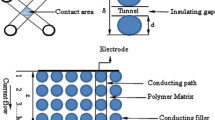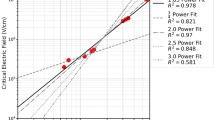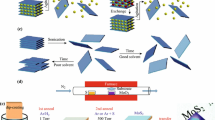Abstract
The current carrying capacity of single-walled semiconducting carbon nanotubes (CNTs) is studied by self-consistent quantum simulations using the non-equilibrium Green’s function formalism with the self-consistent Born approximation. The simulation shows that the current carrying capacity depends on the bias regime and is drastically different from that of metallic tubes. For long CNTs (with a length much longer than zone boundary and optical phonon scattering mean free path), the current saturates around 20 μA in the forward bias regime with unipolar transport due to phonon scattering. In ambipolar transport regime, the current delivery limit is still about 20 μA due to recombination of electron and hole currents. In contrast, for short semiconducting CNTs, the current delivery capacity can be above 25 μA in the unipolar transport regime and further double in the ambipolar transport regime. In reverse bias regime, the current of a long CNT can exceed 20 μA due to the second subband conduction and increased electron injection from the drain. The simulation provides a coherent explanation to the dependence of current delivery limit on bias regime and channel length, which is consistent with recent experiments.
Similar content being viewed by others
References
Park J., Rosenblatt S., Yaish Y., Sazonova V., Üstünel H., Braig S., Arias T.A., Brouwer P.W., McEuen P.L. (2004) Electron-phonon scattering in metallic single-walled Carbon nanotubes. Nano Lett. 4(3): 517–520
Javey A., Guo J., Paulsson M., Wang Q., Mann D., Lundstrom M., Dai H. (2004) High-field, quasi-ballistic transport in short Carbon nanotubes. Phys. Rev. Lett. 92: 106804
Chen Y., Fuhrer M.S. (2005) Electric-field-dependent charge-carrier velocity in semiconducting Carbon nanotubes. Phys. Rev. Lett. 9: 236803
Datta S. (2005) Quantum Transport: Atom to Transistor, 2nd edn. Cambridge University Press, Cambridge, MA
Guo J. (2005) A quantum mechanical treatment of phonon scattering in Carbon nanotube transistors. J. Appl. Phys. 98: 063519
Guo J., Datta S., Lundstrom M., Anantram M.P. (2004) Multi-scale modeling of Carbon nanotube transistors. Int. J. Multiscale Comput. Eng. 2: 257
Author information
Authors and Affiliations
Corresponding author
Rights and permissions
About this article
Cite this article
Ouyang, Y., Yoon, Y. & Guo, J. On the current delivery limit of semiconducting carbon nanotubes. J Computer-Aided Mater Des 14, 73–78 (2007). https://doi.org/10.1007/s10820-006-9037-6
Published:
Issue Date:
DOI: https://doi.org/10.1007/s10820-006-9037-6




